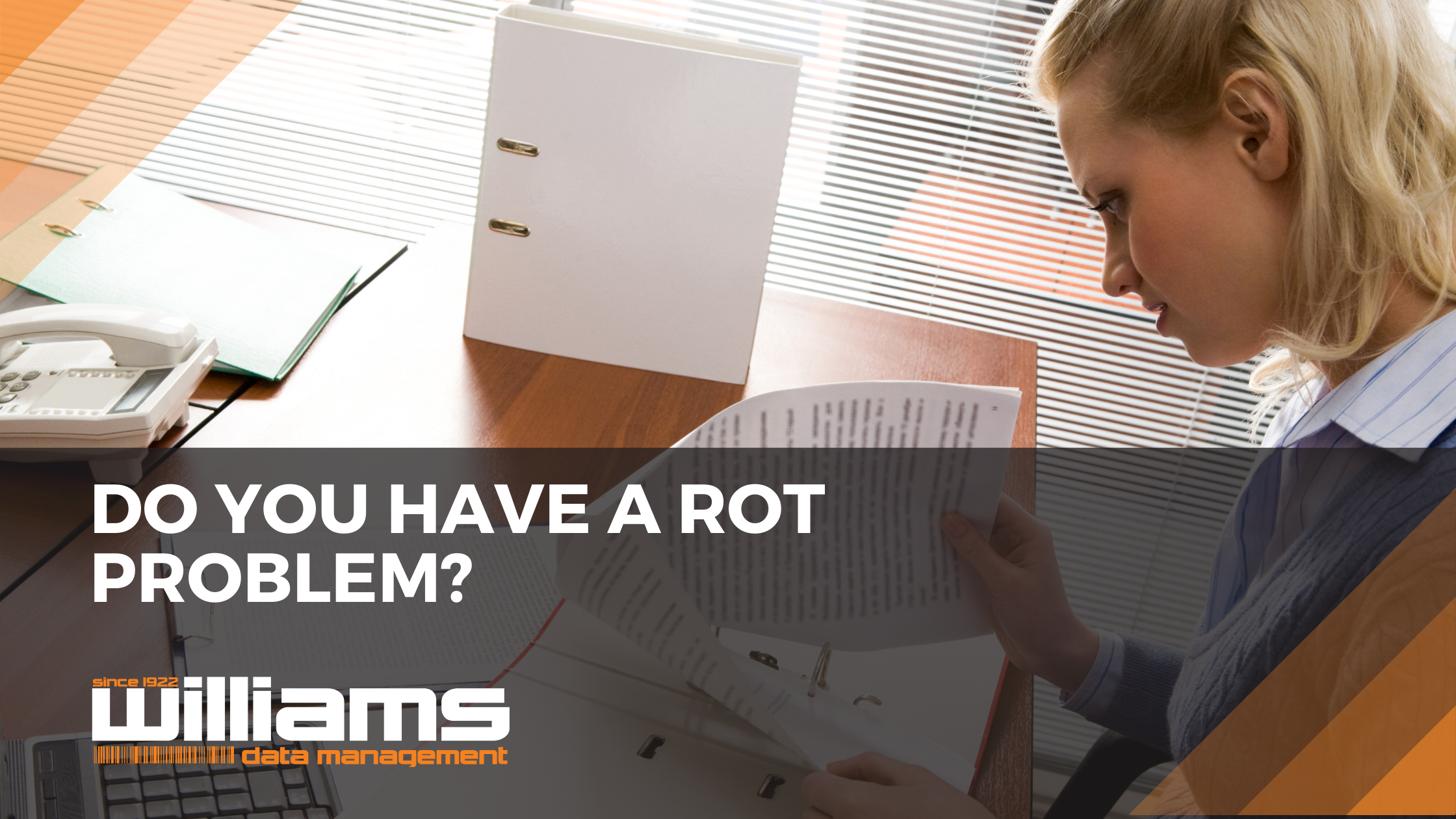
The word rot has a negative connotation to it. “You’ll rot your teeth.” “The food is rotten.” “The wood on your house is rotting away.” All bad implications about the situation they describe. Chances are, you wouldn’t want to be part of any of these and would rectify them immediately if they occurred. Then why is it so often that when it comes to ROT in the information your organization holds, it goes ignored?
What is ROT?
ROT as it relates to records management stands for redundant, obsolete, or trivial information. It includes a broad category of information that can be categorized in one of these three silos:
Redundant
- Information that is duplicate in multiple places.
- Can be across multiple systems or the same one.
- Can include multiple versions of the same file.
Trivial
- Information that has very little value.
- Could not be considered a record at all.
- Could include business activities or business insight.
- Does not matter and can be destroyed/deleted immediately.
Obsolete
- Information that is no longer needed or outdated.
- Could be information that has been replaced by new/updated information sets.
- Could be incorrect or incomplete.
Why do organizations still have ROT?
There are lots of ‘what-if’ questions that compel companies to keep ROT around: What if we need it? What if we get sued? What if we can use it for someone else? What if we want to get that customer back, or talk to their heirs and beneficiaries to re-establish a relationship?
There should be a process of identifying what information must be kept, why and for how long. This allows a firm to establish an end point of a document’s lifecycle, which avoids ROT, mitigates risks and reduces storage costs, which tend to multiply.
How ROT creates inefficiencies in your records management policies
Information that falls into the ROT category causes multiple issues in organizations. Maybe the most pressing of those issues is the threat of exposure. Firms should understand that the longer ROT is kept and not destroyed, the more at risk you become should a breach of information occur.
Keeping ROT also leads to:
- Increases in information storage costs (both physical and digital).
- Access to information takes more time without being able to properly identify the information sets that are needed.
- Less reliable information is produced and can lead to inaccuracy.
- Incorrect versions of information that lead to mistakes and increases in cost to fix mistakes that are made.
How can ROT be prevented?
Implementing and exercising a records retention policy will help eliminate the ROT that exists within a company. By identifying and classifying sensitive information, organizations will have the ability to understand what needs to be kept and what truly is redundant, trivial or obsolete. During this time, it can also be determined that hard copy documents need to be digitized and document scanning can play a role in that transformation, allowing for the destruction of the physical copies. Classifying information will also help implement a shred all policy which dictates to personnel that any document that is produced and no longer needed or utilized is required to be destroyed immediately.
Eliminating ROT within information sets can limit the risk and create sustainable policies and procedures that properly secure information and maintain compliance. Getting on the right track with your records management allows your organization to realize its true potential and ensures that compliance is maintained as you continue to grow.
See related: